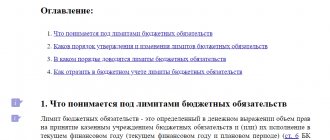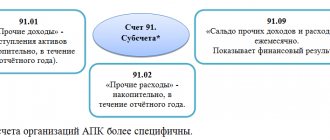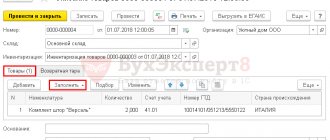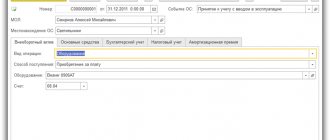Starting from version 3.0.59, “1C: Accounting 8” supports application options for PBU 18/02 “Accounting for calculations of corporate income tax” both in the current edition of the standard and in the updated edition according to the draft of the Ministry of Finance of Russia dated December 5, 2017. The version of PBU 18/02 according to the draft of the Ministry of Finance has not yet been approved, but the new procedure can be applied now. 1C experts talk about the differences in the calculation procedure and interpretation of the definition of some differences, as well as the composition of the routine operations proposed by the program in different applications of PBU 18/02.
What are permanent tax liabilities?
Expenses and income that are generated in any private company require that they be taken into account differently when preparing tax and accounting reports. Some values are included in these reports in different amounts. In the same way, the starting price of assets can be fundamentally different for tax and accounting purposes. This gives rise to permanent tax obligations, better known among professionals under the abbreviation PNO.
To learn how to calculate them correctly, it is important to understand that there are two types of differences when calculating income tax and preparing accounting documents. These include permanent tax assets and liabilities.
The first ones are formed at the moment when part of the expenses can be recorded by law exclusively for tax purposes. Another option is to reflect part of the income exclusively in accounting. As a result, profit, which is calculated on the basis of accounting, turns out to be higher than taxable profit. Thus, assets are equal to the amount of income and expenses, in both accounts, multiplied by 20%.
These obligations arise from the fact that part of the income is officially recognized only when reports are prepared that indicate tax purposes. This leads to a situation in which the profit, according to accounting information, turns out to be significantly lower than that which is taxed. Such an obligation falls under the expense section. To calculate them, the amount is multiplied by 20%.
The point is to clearly see the difference in the amount of profitability for different parameters of the reporting used. It is important to understand this concept in detail in order to conduct accounting competently and efficiently.
PBU 18/02: purpose and basic concepts
Accounting Regulations “Accounting for Income Tax Calculations of Organizations” (PBU 18/02), approved. Order of the Ministry of Finance of Russia dated November 19, 2002 No. 114n, establishes the rules for the formation in accounting and the procedure for disclosing information on calculations of corporate income tax in financial statements.
PBU 18/02 is one of the most complex accounting standards, which still raises questions among accountants both in the interpretation of concepts and in the methodology of application. There are also enough misconceptions expressed about the purpose of this standard, for example: “Proper application of the standard allows you to save on income tax”; “The deferred tax liability is the amount that the tax office will force you to pay in the future” or “Incorrect calculation of a permanent tax asset increases the income tax base,” etc.
Of course, the application of PBU 18/02 has nothing to do with tax accounting, since the organization maintains tax records, calculates income tax, pays it and reflects it in the tax return in accordance with the norms of tax, not accounting legislation. Therefore, the calculated amount of income tax from the point of view of PBU 18/02 is the initial data, that is, an already accomplished fact of economic life.
The purpose of this standard is to determine the accounting procedure for income tax, namely (clause 1 of PBU 18/02):
- rules for the formation in accounting and the procedure for disclosing information on income tax calculations in financial statements;
- the relationship between accounting profit (loss) and taxable profit (loss);
- reflection in accounting of amounts that could affect the amount of income tax for subsequent reporting periods.
This information is in demand by interested users of financial statements, that is, owners or investors of the organization, since it allows them to assess the consequences of paying income tax. In other words, PBU 18/02 allows you to explain to the owner or investor how the tax accrued based on the results of the current period will affect the profit of future periods. This impact is due to the fact that, due to the nature of tax laws, the share of taxes in profits can vary significantly from year to year and often depends on how the tax was paid in previous periods.
Let us assume that the owner (investor) expects that a reasonable amount of tax will be paid on the profit received this year. But often tax legislation contains rules aimed at ensuring that income is recognized earlier and expenses later when calculating taxes. These differences in the rules for recognizing income and expenses in accounting and for tax purposes lead to the formation of temporary differences (clause 8 of PBU 18/02), which, depending on the nature of their impact on taxable profit (loss), are divided into deductible temporary differences and taxable temporary differences (clause 10 of PBU 18/02).
In addition, accounting records may reflect income and expenses that will never be taken into account when calculating income tax. The opposite situation may also arise when income and expenses are taken into account only for profit tax purposes, but are not recognized in accounting. Such income and expenses are considered permanent differences (clause 4 of PBU 18/02).
As a result of applying these rules, the investor's expectations may not be met: taxable profit turns out to be more (and sometimes significantly more) earned, and ultimately almost all of the profit goes to taxes. In the future, the situation may be reversed, when the tax remains virtually unchanged as profits increase.
Deferred tax is a key concept of PBU 18/02
Deferred income tax is understood as an amount that affects the amount of income tax payable to the budget in the following reporting period or in subsequent reporting periods (clause 9 of PBU 18/02). In other words, the amount of income tax paid in the current year can be divided into parts related to the reporting year and future years.
In the period in which deductible temporary differences arise, deferred tax assets (DTAs) are recognized if it is probable that the entity will generate taxable profits in subsequent reporting periods. IT is that part of the deferred tax that should lead to a reduction in income tax in the future (clause 14 of PBU 18/02). Deferred tax assets are reflected in accounting in a separate synthetic account 09 “Deferred tax assets”.
In the period in which taxable temporary differences arise, deferred tax liabilities (DTL) are recognized. IT is that part of the deferred tax that should lead to an increase in income tax payable in the future (clause 15 of PBU 18/02). Deferred tax liabilities are reflected in accounting records in a separate synthetic account 77 “Deferred tax liabilities.”
At the same time, it is important to understand that in relation to ONA and ONO we are talking only about probabilistic estimates and expectations, but not about guarantees, just as receivables reflect the hope of repaying the debt in the future.
Application of PBU 18/02
All organizations are required to follow the provisions of PBU 18/02, with the exception of those that have the right to use simplified methods of accounting, including simplified accounting (financial) reporting (clause 2 of PBU 18/02).
According to paragraph 4 of Article 6 of the Federal Law of December 6, 2011 No. 402-FZ, this is:
- small businesses;
- non-profit organizations;
- organizations that have received the status of participants in the Skolkovo project.
Therefore, if, for example, a small business entity does not have interested users in the results of calculations according to PBU 18/02, it hardly makes sense to use it.
In practice, accounting according to PBU 18/02 is most in demand:
- for public companies - to inform shareholders and investors;
- subsidiaries and dependent companies - for the preparation of consolidated statements in accordance with IFRS rules.
The legislative framework
The essence of the concept and the basis of obligations are enshrined in the order of the Ministry of Finance dedicated to the approval of accounting regulations. The document was adopted in 2002.
It notes that the order is intended to bring domestic legislation to the standards of global financial reporting, and is also necessary to fulfill the parameters of the accounting reform program.
When do PNOs appear?
Such obligations are formed upon the official recognition of expenses only within the framework of accounting. This is also possible when income is recorded exclusively as part of tax reporting. This leads to the fact that when forming the base necessary for calculating income tax, there are several operations that can lead to the emergence of PIT.
Table 1. What leads to the appearance of PNO.
| Cause | Description |
| Property owned by the company is given free of charge to a third party for use | When preparing a report for the tax office, such an operation will not be taken into account in the expense column, and the resulting balance for the price of the object itself or a list of them will also be ignored. In accounting, such a procedure falls into the category of expenses. |
| When preparing a report for the Federal Tax Service, the company identified a certain loss | For example, expenses turned out to be higher than income when calculating the tax base. According to the legislation that was in force two years ago, it was allowed to reduce the tax base by the amount of the loss. This was allowed to be done for ten years from the moment of its formation. After the expiration of this period, the loss could no longer be taken into account when preparing tax reporting. However, it is still taken into account in accounting. |
| Expenses aimed at organizing corporate events also lead to the formation of PNO | To prepare income tax reports, expenses must be supported by official justifications related to specific business processes and documents. Spending on corporate events cannot meet these requirements, so they are not taken into account when preparing tax reporting. |
| Due to changes in the value of the object, fixed assets may be revalued | As a result, their original cost is recalculated. This leads to a recalculation of all depreciation that must be taken into account from the moment the object is used. These nuances are reflected in accounting, but for tax reporting they have no significance. |
These are the most common situations when PNO occurs. In practice, you have to deal with them much more often.
Watch the video on the topic:
Draft amendments to PBU 18/02
At the end of 2022, the Russian Ministry of Finance prepared and published amendments to PBU 18/02. The amendments were planned to come into force in 2019. After the completion of the public discussion of the project in May 2018, the Ministry of Finance released an updated draft of changes (can be found on the official website of the ministry).
In accordance with the program for the development of federal accounting standards for 2018-2020. (approved by order of the Ministry of Finance of Russia dated April 18, 2018 No. 83n) now the expected entry into force of changes to PBU 18/02 for mandatory application has shifted to 2020.
Let us list the essence of the main amendments:
- public sector organizations are excluded from the scope of PBU 18/02;
- the procedure for determining temporary (TD) and permanent differences (PD), including by a participant in a consolidated group of taxpayers (CGT), is being clarified;
- for some types of differences, uncertainty is eliminated as to which types they should be classified as - temporary or permanent;
- the procedure for determining income tax expense (income) and deferred income tax for the reporting period is established;
- PBU 18/02 is supplemented by an Appendix containing a practical example of determining income tax expense (income) and related indicators;
- The terminology is clarified: instead of the concept of “permanent tax asset” (PTA), the term “permanent tax income” is used, and instead of the concept of “permanent tax liability” (PNO), “permanent tax expense” is used. At the same time, all definitions of this concept remain the same, that is, constant tax expense (income) is the amount of tax that leads to an increase (decrease) in tax payments for income tax in the reporting period. A permanent tax expense (income) is recognized by the organization in the reporting period in which a permanent difference arises (clause 7 of PBU 18/02).
Many of the changes made to PBU 18/02 comply with the recommendations of the Accounting Methodological Center (BMC). The new edition of PBU 18/02 can be applied now, without waiting for its official entry into force. Let's take a closer look at some of the changes.
Application of the balance sheet method in determining temporary differences
In the updated PBU 18/02, the concept of temporary differences is expanded: now these are also the results of operations that are not included in accounting profit (loss), but form the base for income tax in another or other reporting periods.
The temporary difference is determined as of the reporting date as the difference between the book value of an asset (liability) and its value accepted for tax purposes (clause 8 of PBU 18/02 according to the Ministry of Finance Project). We remind you that in the current edition of PBU 18/02, temporary differences are identified using the cost method, that is, based on a comparison of income (expenses) of the reporting period determined for accounting purposes and for profit tax purposes. At the same time, paragraph 3 of the current edition of PBU 18/02 states that:
- information on permanent and temporary differences is generated in accounting either on the basis of primary accounting documents directly from the accounting accounts, or in another manner determined by the organization independently;
- temporary differences in analytical accounting are taken into account differentially according to the types of assets and liabilities in the assessment of which they arose.
Thus, the current edition of PBU 18/02 also allows the use of the balance sheet method to account for temporary differences. The use of the balance sheet method is not only simpler compared to the cost method, but also brings the rules of Russian accounting standards closer to international financial reporting standards (a similar definition of temporary differences is given in IAS 12 “Income Taxes”).
Adjustment of the list of temporary differences
In the current edition of PBU 18/02, different paragraphs of the document are devoted to deductible and taxable temporary differences. Now the reasons for the formation of all temporary differences are indicated in a single list (clause 11 of PBU 18/02 according to the Ministry of Finance Project).
Firstly, temporary differences arise due to the fact that different rules (methods) are applied in accounting and for profit tax purposes:
- formation of the initial cost and depreciation of non-current assets;
- formation of the cost of sold products, goods, works, services;
- recognition of income and expenses associated with the sale of fixed assets;
- creating reserves for doubtful debts and other similar reserves;
- reflections of interest paid by an organization for providing it with funds (credits, borrowings) for use.
Secondly, temporary differences arise due to changes in the carrying amount of assets and liabilities, which can only occur according to accounting rules as a result of:
- revaluation of assets at market value;
- depreciation of financial investments for which their current market value is not determined, inventories and other assets;
- recognition of estimated liabilities.
We remind you that the Tax Code does not provide for changes in the book value of assets and liabilities in such situations.
Finally, temporary differences arise as a result of:
- loss carried forward, not used to reduce income tax in the reporting period, but which will be accepted for tax purposes in subsequent reporting periods;
- other similar differences.
Thus, doubts regarding the qualification of differences in securities, reserves and estimated liabilities, which are now clearly interpreted as temporary, are eliminated.
The concept of income tax expense (income)
The amendments establish that for the purposes of PBU 18/02, income tax expense means the amount of tax recognized in the income statement as an amount that reduces profit before tax when calculating net profit for the reporting period. Profit tax expense (income) is determined as the amount:
- current income tax;
- deferred income tax.
Deferred income tax for the reporting period is defined as the total change in deferred tax assets and deferred tax liabilities for this period, excluding the results of transactions not included in accounting profit (loss) (clause 20 of PBU 18/02 according to the Ministry of Finance Project).
Current income tax is income tax for tax purposes, determined according to tax accounting data (clause 21 of PBU 18/02 according to the Ministry of Finance Project). Let us remind you that in the current version, the current income tax is determined based on the amount of conditional expense (conditional income), adjusted for the amounts of PNO, PNA, ONA and ONO.
A practical example of calculating income tax expense (income) and related indicators is given in the Appendix to PBU 18 for the Ministry of Finance Project.
How to calculate PNO
This indicator is directly dependent on several constant differences. They are included in the formula on the basis of which the company is able to calculate these obligations. The formula looks like this:
PNO = constant difference * income tax rate
We emphasize that the base rate is standard 20%. It has remained at this level for a long time, starting in 2009, when the corresponding federal law No. 224 was adopted, regulating the provisions of public-private partnerships.
At the same time, at the legislative level, it was decided that local regional authorities have the right to introduce their own rate. A clear example of how this works can be given in the likeness of Moscow. Here, reduced tax rates of 12.5% have been introduced for companies specializing in the production of automobiles. And other enterprises calculate their reporting based on the requirements of federal legislation.
Examples of PNO accounting
To clearly understand how to calculate permanent tax liabilities, let’s look at a specific example using the formula.
Let’s assume that a particular company’s spending on purchasing gift products for its anniversary amounted to 68,000 rubles. Expenses made must be reflected in accounting. We calculate the required indicator. If an enterprise uses general rules when reporting, then it should use regulation 18/02, which regulates how income tax calculations must be made.
It will take 68,000 rubles multiplied by 20%. We receive 13,600 rubles. This will be the permanent tax liability accrued by us.
Of course, the use of constant taxes in accounting is not limited to this example. Let's look at another common situation. When paying for certain types of advertising services, a limit is introduced on the amount that can be officially recognized for tax purposes. In particular, this value is 1% of the revenue achieved for the reporting period. Let's say that over the past tax period the company spent 100 million on advertising. Of these, 10 million will not be taken into account, since this is the difference that turns out to be above the norm.
Considering that the standard rate used by the enterprise is 20%, the size of the PNO will be equal to 2 million rubles.
The expenses incurred by the enterprise in this case are reflected as follows: 100 million Dt 44 – Kt 60.
To visually display the PNO, you will need to multiply 10 million by 20%: 2 million Dt 99 - Kt 68.
Another option is how such discrepancies between different reporting forms may appear and be taken into account. The company receives 200,000 rubles for development. One of the investors transfers this amount to her account. He is actually the largest owner, since he has over half of the authorized capital in the investment portfolio. According to Article 251 of the Tax Code of the Russian Federation, these funds at the disposal of the company are not taxed.
Reflection of obligations in 1C, watch the video:
When preparing financial statements, the money will have to be officially considered acquired income. A stable difference is formed on which the permanent tax asset is based. It is also calculated based on a base rate of 20%. In this situation, it turns out to be equal to 40,000 rubles.
Who is obliged to take into account the difference when generating profit?
When determining profit for tax calculation in accounting (BU) and tax (TA) accounting, discrepancies often arise between expenses incurred and income received.
This is due to the difference in regulatory rules that must be followed: for tax accounting they are determined by the Tax Code of the Russian Federation, and for accounting - various PBUs. As a result, a situation arises when expenses or income take place in one accounting, but not in the other. Then the accounting profit indicated in the financial results will differ from the tax profit recorded in the income tax return. In order for this discrepancy to be correctly reflected in accounting, accounting regulation 18/02 “Accounting for calculations of corporate income tax” was developed, approved by Order of the Ministry of Finance dated October 19, 2002 No. 114n.
In the previous edition of PBU 18/02, permanent tax revenues were called permanent tax assets, and expenses were called liabilities.
This provision must be used by income tax payers. Enterprises that use a simplified accounting system, including simplified financial statements, are exempt from this obligation. They have the right to decide whether to apply the document or not. This decision must be fixed in the accounting policy.
ConsultantPlus experts explained in detail how to apply PBU 18/02 when permanent and temporary differences arise. Get trial demo access to the K+ system and upgrade to the Ready Solution for free.
To whom and to what extent PBU 18/02 applies, you can find out from the article “PBU 18/02 - who should apply and who should not?”
PNO in financial statements
The easiest way to illustrate tax obligations is to use the special Appendix 18/02, which is used by all representatives of this profession without exception. It regulates in detail and describes how the calculation of the income tax of a particular company or enterprise should be carried out according to the law. According to this document, tax liabilities recognized as permanent should be accounted for in debit account 99. It describes the losses and profits of legal entities. Additionally, it is necessary to consider the credit account No. 68, and not the subsidized account. Only together does it become possible to create a complete and objective picture.
Tax liabilities, considered permanent in accounting terminology, as well as the corresponding assets, are officially recorded precisely during the period when the financial transactions were directly carried out. It is recommended to limit them to a certain month so as not to delay reporting. Such requirements are contained in Article 7 of the Regulations. These transactions do not need to be reflected when preparing the balance sheet.
When compiling a report on the financial successes or failures achieved by the company, liabilities, along with assets, are written down in line No. 2421 specially designated for this. The difference in debit turnover compared to credit turnover is entered here.
PBU 18/02 in “1C: Accounting 8” (rev. 3.0)
“1C: Accounting 8” edition 3.0 supports the provisions of PBU 18/02. Analytical accounting of permanent and temporary differences is carried out using the accounting register, which provides special resources Amount PR and Amount VR separately for debit and credit accounts. Thus, in combination with the analytical characteristics of the posting, the program provides accounting for the types of assets and liabilities in the valuation of which a difference has arisen.
The concept of “types of assets and liabilities” is not disclosed in PBU 18/02. In “1C: Accounting 8”, the types of assets and liabilities are fixed assets (fixed assets), materials, accounts receivable and payable, etc.
Differences are automatically recorded in the resources Amount PR Dt, Amount BP Dt, Amount PR Kt and Amount VR Kt as a result of posting standard documents of the accounting system. If a posting is entered into the accounting register manually, then tax accounting data (resources Amount NU Dt and Amount NU Kt, taking into account differences if any) should be filled in manually (if the use for tax accounting purposes is set in the program chart of accounts for a specific account). Resources must be filled in such a way that the conditions are met (the key rule for the ratio of transaction amounts):
Amount BU = Amount NU Dt + Amount PR Dt + Amount BP Dt;
Amount BU = Amount NU Kt + Amount PR Kt + Amount BP Kt,
where Accounting Amount is the transaction amount for accounting purposes.
Monitor compliance with rules using:
- standard reports, if you set the flag for the Control indicator;
- processing Analysis of income tax accounting.
Setting up application options for PBU 18/02
The procedure for applying PBU 18/02 is configured in the Accounting Policy information register (Main section). Small businesses may not keep records of deferred assets and liabilities by setting the corresponding switch to the Not maintained position.
Starting from version 3.0.59, “1C: Accounting 8” supports options for using PBU 18/02 (Fig. 1):
- Conducted in accordance with the current edition of PBU 18/02;
- Conducted in accordance with the project of the Ministry of Finance dated December 5, 2017.
Despite the fact that the edition of PBU 18/02 for the Ministry of Finance Project has not yet been approved, the new procedure can be applied now, since in accordance with paragraph 3 of the current edition of PBU 18/02, the use of the balance sheet method for accounting for temporary differences is allowed. The Russian Ministry of Finance shares the same opinion. In the recommendations for conducting an audit of the annual financial statements for 2012 (Appendix to the letter of the Ministry of Finance of Russia dated 01/09/2013 No. 07-02-18/01) it is noted that PBU 18/02 does not contain restrictions on the use of the method of comparing the book value of assets and liabilities with their tax base.
For any of the two options for applying PBU 18/02 in the program, the calculated amount of income tax will be the same, since the tax is calculated according to the rules and data of tax accounting. There will be differences in the calculation algorithms according to PBU 18/02, in the interpretation of the definition of some differences, as well as in the composition of regulatory operations and the form of certificates and calculations.
Routine operations and certificates and calculations
In the current edition of PBU 18/02, as part of the Month Closing processing, one routine operation, Calculation of Income Tax, is performed, which performs two functions:
1. Tax accrual according to tax accounting data for payment to the budget (postings to account 68.04.1 “Settlements with the budget”).
2. Calculations according to PBU 18/02 according to accounting data (according to the previous algorithm, that is, the cost method) for financial reporting (postings to accounts 09; 77; 99.02 “Income Tax”).
Since, according to the previous algorithm, PNO, PNA, ONO and ONA are calculated for each transaction of identified income or expense, the Certificate-calculation of tax assets and liabilities (Fig. 1) is formed in a form that is quite difficult to understand.
Rice. 1. Certificate-calculation of tax assets and liabilities
In the new version of the application of PBU 18/02 according to the Ministry of Finance Project, two separate regulatory operations are performed as part of the Month Closing processing:
- Calculation of income tax, which only calculates tax according to tax accounting data for payment to the budget;
- Calculation of deferred tax according to PBU 18/02. This new operation performs only calculations according to PBU 18/02 according to accounting data (using a new algorithm, that is, the balance sheet method) for financial statements.
In accordance with the new algorithm, new certificates and calculations are generated:
- Deferred income tax (Fig. 2). This calculation certificate is generated in an easy-to-read form, since deferred tax is calculated using the balance method, and not for each income and expense transaction (see the detailed example in the Appendix as part of the Ministry of Finance Project);
- The effect of changes in income tax rates. This calculation certificate illustrates the calculation of the weighted rate when the tax rate changes.
Rice. 2. Certificate-calculation of deferred income tax
Let's look at an example of a comparison of calculation certificates generated under different procedures for applying PBU 18/02.
The impact of PNO on company profits
You can assess how these tax obligations affect the financial condition of the enterprise by again referring to the same Regulations. Having studied it, we come to the conclusion that accounting profit, multiplied by the tax rate, will be considered a conditional expense. This value must be taken into account when determining the amount of income tax.
The product of the amount of profit and the direct rate gives us a value equal to the current income tax.
By dividing the total contingent expenses by the income acquired during the reporting period, they strive to bring it as close as possible to the previously obtained parameters. To do this, you just need to use the concepts and calculations of liabilities and assets. Herein lies the key impact of these obligations on the bottom line.
Source of deviations - temporary differences
As before, in paragraph 8 of PBU 18/02, BP refers to income and expenses that form accounting profit (loss) in one reporting period, and the tax base for income tax in another or other reporting periods.
But it has been added that now the results of operations that are not included in accounting profit (loss), but form the base for income tax in another or other reporting periods, are also included in the IR. It has been established that the RR as of the reporting date is determined as the difference between the book value of an asset (liability) and its value accepted for tax purposes.
According to clause 10 of PBU 18/02, depending on the nature of their impact on taxable profit (loss), VRs are divided into deductible (VVR) and taxable (NVR). The definitions of these terms are now given, respectively, in paragraphs 11 and 12 of PBU 18/02. Then both will be discussed in clause 11 of PBU 18/02, and clause 12 will lose force. However, the norms will not change fundamentally. In fact, both of these differences lead to the formation of deferred income tax, which should reduce (in the case of income tax) or increase (in case of income tax) the amount of income tax payable to the budget in the next reporting period or in subsequent reporting periods.
It was considered appropriate in the same paragraph 11 of PBU 18/02 to combine new typical (most common) reasons for the formation of VR, without separating the lists for VR and NVR:
| New edition | Current edition | |
| VVR | NVR | |
| Application of different rules for assessing the historical cost and depreciation of non-current assets for accounting purposes and tax purposes | Application of different methods of calculating depreciation for accounting purposes and purposes of determining income tax | |
| Application of different methods for forming the cost of sold products, goods, works, services for accounting purposes and taxation purposes | Application of different methods of recognition of commercial and administrative expenses in the cost of sold products, goods, works, services in the reporting period for accounting purposes and taxation purposes; the presence of accounts payable for purchased goods (work, services) when using the cash method of determining income and expenses for tax purposes, and for accounting purposes - based on the assumption of temporary certainty of the facts of economic activity | Recognition of revenue from the sale of products (goods, works, services) in the form of income from ordinary activities of the reporting period, as well as recognition of interest income for accounting purposes based on the assumption of temporary certainty of the facts of economic activity, and for tax purposes - on the cash basis |
| Application, in the case of the sale of fixed assets, of different recognition rules for accounting purposes and taxation purposes of income and expenses associated with their sale | Application, in the case of the sale of fixed assets, of different rules for recognizing for accounting and tax purposes the residual value of fixed assets and expenses associated with their sale | — |
| Revaluation of assets at market value for accounting purposes | — | — |
| Recognition in accounting records of impairment of financial investments for which their current market value is not determined, inventories and other assets | — | — |
| Application of different rules for creating reserves for doubtful debts and other similar reserves for accounting purposes and tax purposes | — | — |
| Recognition of estimated liabilities in accounting | — | — |
| Application of various rules for reflecting interest paid by an organization for providing it with funds (credits, borrowings) for use for accounting purposes and taxation purposes | — | Same rule |
| The presence of a loss carried forward that was not used to reduce income tax in the reporting period, but which will be accepted for tax purposes in subsequent reporting periods | The same rule, but allowing that the legislation of the Russian Federation may provide otherwise | — |
How to pay off deferred tax liabilities
Economic reporting standards, accepted throughout the world, contain instructions according to which it is recommended to calculate what the amount of taxes will be for a certain period. A basic standard is provided, containing comprehensive algorithms for how to determine all foreign and domestic existing tax payments, and suggests what to include in the final reports. Attention is paid to income taxes withheld at sources of payments.
According to this standard, there is a need to take into account not only those taxes that are required to be paid, but also the size of the resulting consequences determined by the specific results of the organization’s economic activities and completed transactions. This gives rise to a concept called deferred tax liability. When paying them, you should take into account the existing requirements. Everything together gives a specific final result.
Experts use deferred tax liabilities to determine the amount of taxes paid directly on profits. They must be entered for the corresponding calendar and reporting periods. In practice, they appear due to the introduction of taxation boundaries at the legislative level.
As a rule, such liabilities are recognized using reduced net benefits for the previous calendar year or other time period. An alternative option is to reduce the amount of equity capital after it is reflected in the balance sheet of the corresponding item.
When there is a reduction in the amounts subject to the corresponding taxes, a decrease begins, which is reflected in an increase in tax liabilities. They must be paid now. The result of this activity is a reduction in existing outstanding liabilities.
It is possible to establish their parameters by multiplying the amount of borders subject to taxation by a certain rate. Calculations are made for a specific period of time.
For a detailed calculation, it is recommended to use account No. 77, which describes tax liabilities that are currently deferred.
They are formalized in the accounting papers with a special entry, which provides comprehensive calculation parameters, profit charges, and the obligations themselves, which are still deferred.
Great importance is given to analysts' reports in determining temporarily deferred obligations. This activity is carried out on several different types of assets, creating existing tax differences over time.
Periodically, when these differences are gradually reduced or completely eliminated, tax liabilities are also reduced or eliminated. If a specific asset or one or more types of liabilities are lost, a write-off is issued. It is worth noting that it is for them that specific amounts are officially calculated. It increases tax profits. All time periods are taken into account, not just the current and upcoming ones.
About the deferred type in the video:
When changes are made to relevant bills and decrees regarding current rates, the amounts of assets and liabilities need to be recalculated. These actions will be required, since a gap will form during recalculation. Part of the profit may not be distributed, and uncovered losses will appear.
Given that there are currently several different rates, liabilities are assessed based on a specific type of income, and if necessary, it is reduced as much as possible.
To summarize, we note that permanent tax liabilities are an important tool for financiers and accountants. To fill out documents correctly and up to date, you must correctly use the formulas that are used for PNO.
Top
Write your question in the form below









